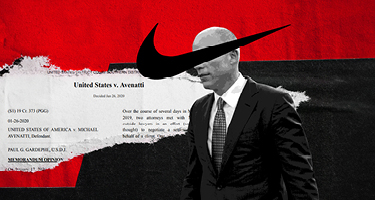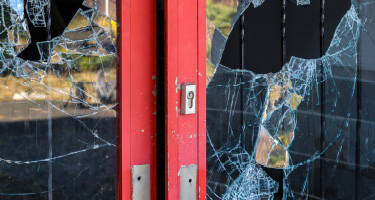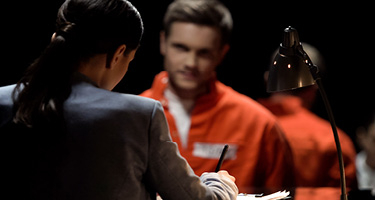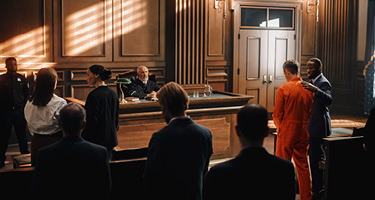Most federal prosecutions are handled by United States Attorney’s Offices or USAOs. There are 93 federal district courts in the United States (as well as for U.S. territories), and each has its own USAO. Each USAO is led by a United States Attorney, who has been nominated by the President of the United States and confirmed by the Senate. USAOs typically have several Assistant United States Attorneys, or AUSAs. The AUSAs may serve as the Criminal Chief for the district, Criminal Coordinator for a particular office within the district or as a “line prosecutor”—those whose main job is to prosecute cases in court.
The USAOs are part of the Department of Justice, headquartered in Washington, D.C., but are also largely independent of it. The Executive Office for the United States Attorneys—another division of the Department of Justice—provides oversight and creates policies for the USAOs and AUSAs. This independence can lead to problems when Washington, D.C., gets involved in a case.
In some cases, the prosecution is run out of “Main Justice”, a common reference to the Department of Justice headquarters in Washington, D.C. Main Justice has criminal divisions, and its prosecutors sometimes appear in prosecutions across the 93 federal districts. In the world of white-collar prosecutions, a lawyer is most likely to encounter prosecutors from one of four sections.
- Computer Crime and Intellectual Property Section (CCIPS)
- This section typically gets involved when a defendant has allegedly stolen intellectual property or trade secrets by downloading that property from a computer system—usually at the behest of a foreign country.
- Fraud Section (FRD)
- This section prosecutes fraud offenses that are complex, spread across multiple districts or have a high-dollar amount of loss.
- Public Integrity Section (PIN)
- This section prosecutes corruption against public officials in federal, state or local offices, including elected officials and administrators. If a person is accused of bribing a governmental official, this section will likely prosecute that person along with the official.
- Tax Division
- This section has exclusive jurisdiction over criminal offenses involving the Revenue Code.
Depending on the stage of the case, Main Justice’s involvement may not always be obvious. In most post-indictment cases, the Main Justice prosecutor and a local AUSA (or two) will enter their appearances on behalf of the United States in the case. But not always. A Main Justice prosecutor may wait in the wings, providing advice to the local AUSAs prosecuting the case. In a pre-indictment case, the local AUSA may copy a Main Justice prosecutor on emails or include the Main Justice prosecutor on conference calls—even if the Main Justice prosecutor has been silent. In other cases, Main Justice’s participation will be obvious. For instance, DOJ policy requires the Tax Division’s involvement in every case involving tax laws. In fact, the Tax Division must sign off on a tax prosecution before a USAO can even seek an indictment.
Main Justice’s involvement complicates a case. With more than one cook in the kitchen, a lawyer may find it difficult to determine who has decision-making authority for the prosecution. Nominally, the United States Attorney for the district has the ultimate say in how to resolve a case. And those United States Attorneys usually (but not always) trust their own AUSA to handle cases properly. So, for instance, when the local prosecutors want to resolve a case one way, and the Main Justice prosecutors balk, the local prosecutors—with the backing of their United States Attorney—should prevail.
Yet that happens rarely. In tax cases, for instance, DOJ policy requires the Tax Section to sign off on any resolution. Aside from policy, there are other reasons a United States Attorney might defer to Main Justice. The United States Attorney might conclude that the Main Justice prosecutors are subject-matter experts and thus go along with their demands. Or the United States Attorney may decide that the cost of a bureaucratic fight with Main Justice—which may include smaller budgets, fewer cases and more enemies—is simply not worth it. These dynamics play out almost entirely behind the scenes from the lawyer representing a client in a white-collar case through email chains and conference calls to which the lawyer isn’t privy.
Identifying a prosecution’s decision-maker becomes even more complicated when more than one Main Justice division is involved. For instance, if a theoretical involves both bribery of a public official and tax evasion, then prosecutors from both the Public Integrity and Tax sections might be involved, along with the local USAO. The participation of another section adds another dimension to an already murky exercise for the lawyer handling this type of case.
While there are no hard-and-fast rules for identifying which prosecutor has decision-making authority in a case involving Main Justice, a lawyer can glean some insights in some cases.
- If a client is accused of committing tax offenses, a Main Justice prosecutor is the primary decision-maker—even if that prosecutor does not enter an appearance in the case.
- If the AUSAs on the case are relatively new to the job or inexperienced in the particular type of alleged offense (compared to the Main Justice prosecutor), then the Main Justice prosecutor is likely the primary decision-maker.
- If the AUSAs on the case are experienced, especially if they hold supervisory authority in the local USAO, then there is a greater chance that they are the primary decision-makers.
- If a United States Attorney is new to federal service or lacks a background in criminal law, then the Main Justice prosecutors are likely the primary decision-makers.
Again, these observations aren’t foolproof—every situation is different. Ultimately, it will be up to an individual lawyer’s sense of the case and measurement of the personalities involved that will lead the lawyer to identify who actually sits on the other side of the bargaining table.
If you need legal guidance, use the Best Lawyers Find a Lawyer tool to connect with qualified lawyers in your area.

































